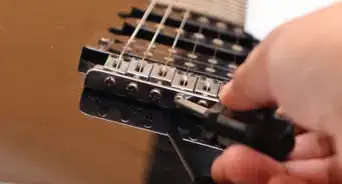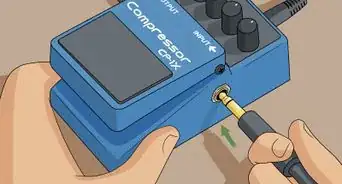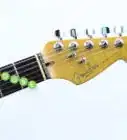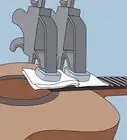This article was co-authored by Aaron Asghari. Aaron Asghari is a Professional Guitarist and the lead guitarist of The Ghost Next Door. He received his degree in Guitar Performance from the Guitar Institute of Technology program in Los Angeles. In addition to writing and performing with The Ghost Next Door, he is the founder and primary guitar instructor of Asghari Guitar Lessons.
This article has been viewed 107,006 times.
If you’re a guitar lover, you might be out for a unique look as well as your own sound. You might also be interested to learn more about how guitars are put together and function. If you have moderate woodworking skills, you can build your own solid-body electric guitar. To make things easier, you can even purchase some parts pre-made. Use your creativity for the finishing touches, and you’ll have a unique guitar and a story to tell.
Steps
Community Q&A
-
QuestionDo I need much money for this?
 Community AnswerYou can get kits to transform an acoustic guitar to electric for $50 (£30) or buy a full set for around $125 (£105), but it all depends on the type of parts you're using.
Community AnswerYou can get kits to transform an acoustic guitar to electric for $50 (£30) or buy a full set for around $125 (£105), but it all depends on the type of parts you're using. -
QuestionHow thick does the wood for the body need to be?
 Espinoza ChristianCommunity AnswerIt is solely dependent on your preferences as well as the type of wood. But for a design like the common Fender Stratocaster, it should be about 1 and 12/16". If you are designing something like a Les Paul it should be closer to 1 and 7/8", but the Les Paul requires an extremely careful hand due to the curvature and styling.
Espinoza ChristianCommunity AnswerIt is solely dependent on your preferences as well as the type of wood. But for a design like the common Fender Stratocaster, it should be about 1 and 12/16". If you are designing something like a Les Paul it should be closer to 1 and 7/8", but the Les Paul requires an extremely careful hand due to the curvature and styling. -
QuestionCan you show schematics for how to wire the guitar?
 Rudy TothCommunity AnswerYou don't need a schematic to wire a guitar. First, find the hole that you are placing in a new string at the "Bridge" where the silver dot pick ups are located. Run the tip of the string through the hole gently pull the string until no more comes out slide the string through the hole on the neck give some slack too where you think its good enough. Wind that string up and place the string under the first coil turn, so that it has a better grip make sure it fits in the slot plastic part near the bottom of the neck groove. Bring out your guitar "tuner" and tune it up.
Rudy TothCommunity AnswerYou don't need a schematic to wire a guitar. First, find the hole that you are placing in a new string at the "Bridge" where the silver dot pick ups are located. Run the tip of the string through the hole gently pull the string until no more comes out slide the string through the hole on the neck give some slack too where you think its good enough. Wind that string up and place the string under the first coil turn, so that it has a better grip make sure it fits in the slot plastic part near the bottom of the neck groove. Bring out your guitar "tuner" and tune it up.
References
- ↑ https://blog.udemy.com/how-to-make-a-guitar/
- ↑ https://www.stringjoy.com/guitar-wood-guide-tonewoods-guitar-building/
- ↑ Aaron Asghari. Professional Guitarist and Instructor. Personal interview. 15 February 2019.
- ↑ https://blog.udemy.com/how-to-make-a-guitar/
- ↑ https://blog.udemy.com/how-to-make-a-guitar/
- ↑ https://canadianwoodworking.com/project/build-an-electric-guitar-without-the-fancy-tools/
- ↑ https://canadianwoodworking.com/project/build-an-electric-guitar-without-the-fancy-tools/
- ↑ https://canadianwoodworking.com/project/build-an-electric-guitar-without-the-fancy-tools/
- ↑ https://blog.udemy.com/how-to-make-a-guitar/
- ↑ https://canadianwoodworking.com/project/build-an-electric-guitar-without-the-fancy-tools/
- ↑ https://canadianwoodworking.com/project/build-an-electric-guitar-without-the-fancy-tools/
- ↑ https://blog.udemy.com/how-to-make-a-guitar/
- ↑ https://blog.udemy.com/how-to-make-a-guitar/
- ↑ https://blog.udemy.com/how-to-make-a-guitar/
- ↑ https://blog.udemy.com/how-to-make-a-guitar/
About This Article
To build an electric guitar, start by cutting out the guitar body from a piece of wood like maple or swamp ash. Then, bolt a pre-made neck onto the body and attach the bridge. Next, install the pick-ups, volume control, and guitar cord. Finish by putting your strings on the guitar and testing out your instrument. If you want to make the process easier, you could try purchasing an electric guitar kit. To get some design ideas for your electric guitar, keep reading!

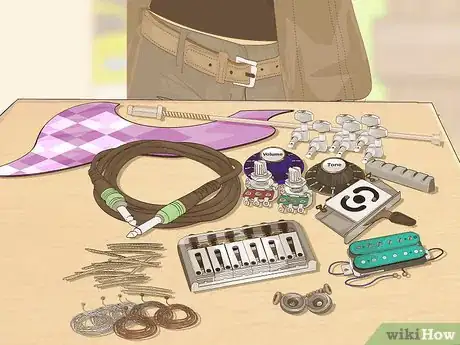
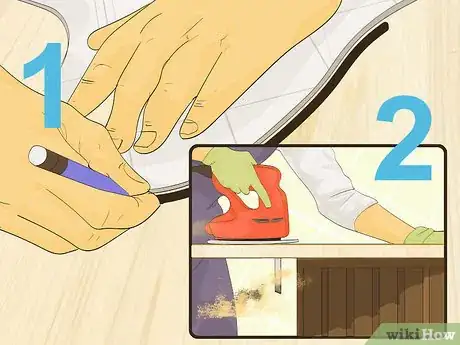
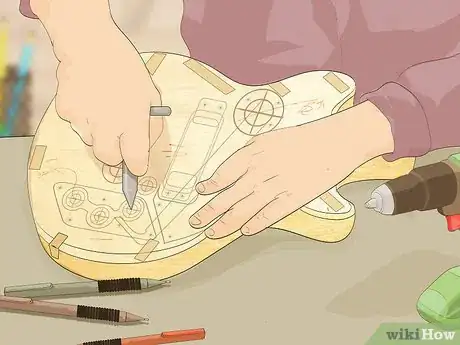
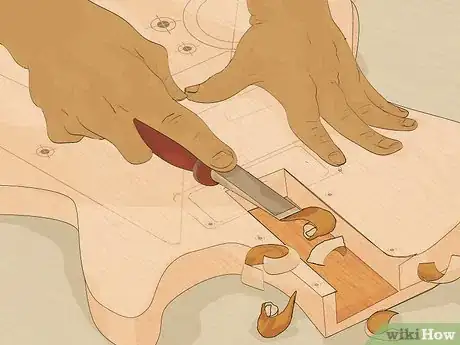
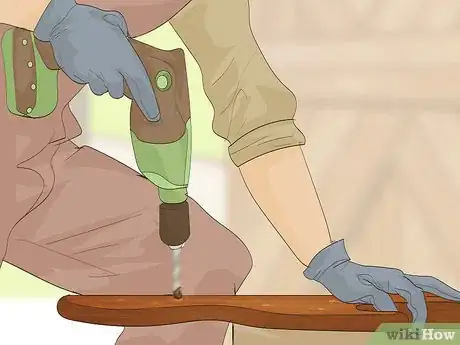
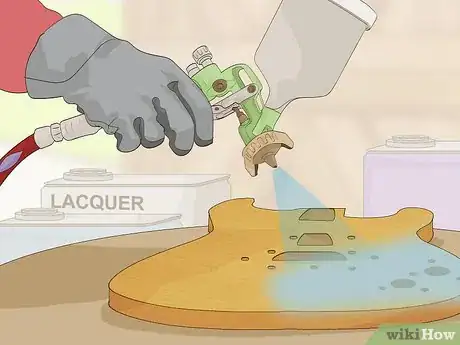
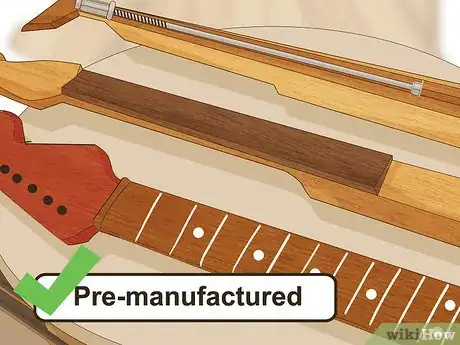
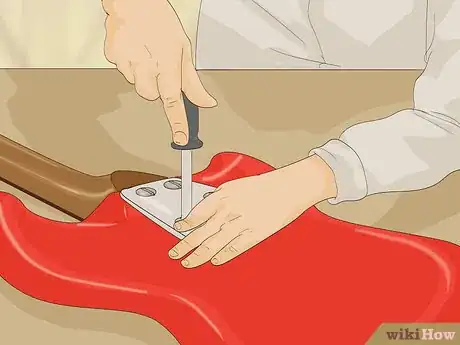
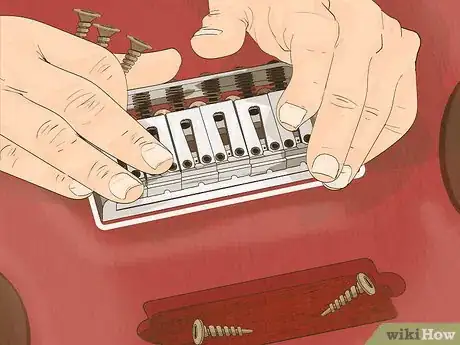
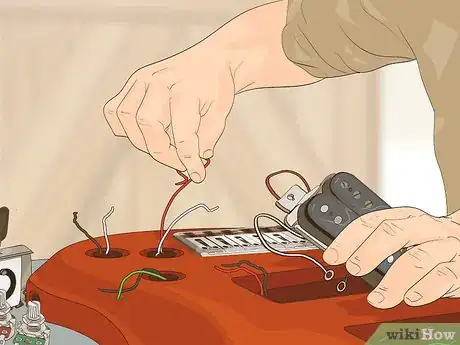
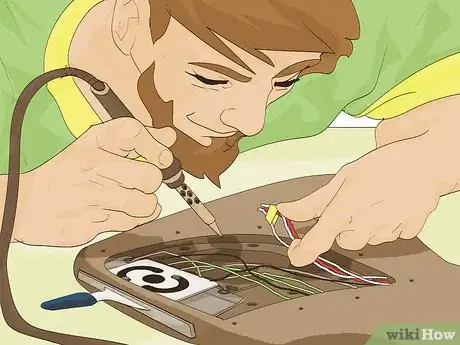


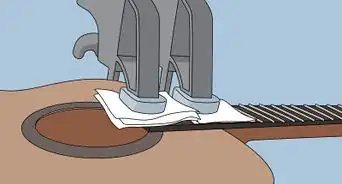

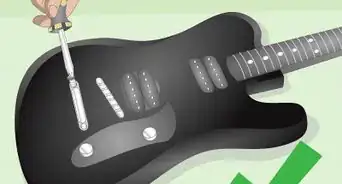
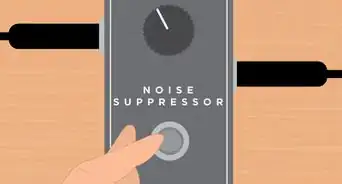

-Step-19-Version-2.webp)

